995 scholarly books by The Institution of Engineering and Technology and 29
start with W
995 scholarly books by The Institution of Engineering and Technology and 29
995 scholarly books by The Institution of Engineering and Technology
29 start with W start with W
29 start with W start with W
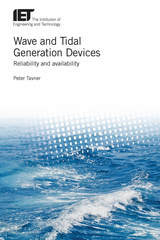
Wave and Tidal Generation Devices
Reliability and availability
Peter Tavner
The Institution of Engineering and Technology, 2017
There are many wave and tidal devices under development but as yet very few are actually in revenue earning production. However the engineering problems are gradually being solved and there is an appetite to invest in these renewable generation technologies for harsher environments. To some extent the wave and tidal generation industry is following in the wake of the wind industry, particularly learning from the growing experience of offshore wind farm deployment. This book combines wind industry lessons with wave and tidal field knowledge to explore the main reliability and availability issues facing this growing industry.
[more]
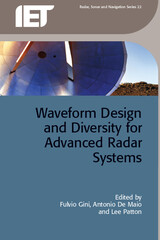
Waveform Design and Diversity for Advanced Radar Systems
Fulvio Gini
The Institution of Engineering and Technology, 2012
The phrase 'waveform design and diversity' refers to an area of radar research that focuses on novel transmission strategies as a way to improve performance in a variety of civil, defense and homeland security applications. Three basic principles are at the core of waveform diversity. First is the principle that any and all knowledge of the operational environment should be exploited in system design and operation. Second is the principle of the fully adaptive system, that is, that the system should respond to dynamic environmental conditions. Third is the principle of measurement diversity as a way to increase system robustness and expand the design trade space. Waveform design and diversity concepts can be found dating back to the mid-twentieth century. However, it has only been in the past decade or so, as academics and practitioners have rushed to exploit recent advances in radar hardware component technology, such as arbitrary waveform generation and linear power amplification, that waveform diversity has become a distinct area of research. The purpose of this book is to survey this burgeoning field in a way that brings together the diverse yet complementary topics that comprise it. The topics covered range from the purely theoretical to the applied, and the treatment of these topics ranges from tutorial explanation to forward-looking research discussions. The topics treated in this book include: classical waveform design and its extensions through information theory, multiple-input multiple-output systems, and the bio-inspired sensing perspective; the exploration of measurement diversity through distributed radar systems, in both cooperative and non-cooperative configurations; the optimal adaptation of the transmit waveform for target detection, tracking, and identification; and more. This representative cross-section of topics provides the reader with a chance to see the three principles of waveform diversity at work, and will hopefully point the way to further advances in this exciting area of research.
[more]

Waveguide Handbook
N. Marcuvitz
The Institution of Engineering and Technology, 1986
The Waveguide Handbook is an unabridged reprint of the book first published in 1951 by McGraw Hill as Volume 10 of the MIT Radiation Laboratory Series.
[more]
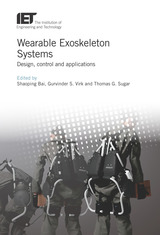
Wearable Exoskeleton Systems
Design, control and applications
Shaoping Bai
The Institution of Engineering and Technology, 2018
Wearable exoskeletons are electro-mechanical systems designed to assist, augment, or enhance motion and mobility in a variety of human motion applications and scenarios. The applications, ranging from providing power supplementation to assist the wearers to situations where human motion is resisted for exercising applications, cover a wide range of domains such as medical devices for patient rehabilitation training recovering from trauma, movement aids for disabled persons, personal care robots for providing daily living assistance, and reduction of physical burden in industrial and military applications. The development of effective and affordable wearable exoskeletons poses several design, control and modelling challenges to researchers and manufacturers. Novel technologies are therefore being developed in adaptive motion controllers, human-robot interaction control, biological sensors and actuators, materials and structures, etc.
[more]
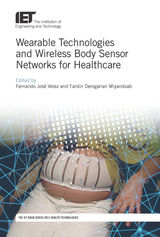
Wearable Technologies and Wireless Body Sensor Networks for Healthcare
Fernando José Velez
The Institution of Engineering and Technology, 2019
Continuous advances in wearables, sensors and smart Wireless Body Area Network technologies have precipitated the development of new applications for on-, in- and body-to-body wearable communications for healthcare and sport monitoring. Progress in this cross-disciplinary field is further influenced by developments in radio communication, protocols, synchronization aspects, energy harvesting and storage solutions, and efficient processing techniques for smart antennas.
[more]

Weibull Radar Clutter
Matsuo Sekine
The Institution of Engineering and Technology, 1990
The material presented in this book is intended to provide the reader with a practical treatment of Weibull distribution as applied to radar systems.
[more]
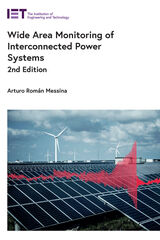
Wide Area Monitoring of Interconnected Power Systems
Arturo Román Messina
The Institution of Engineering and Technology, 2022
Power systems are becoming increasingly complex, handling rising shares of distributed intermittent renewable generation, EV charging stations, and storage. To ensure power availability and quality, the grid needs to be monitored as a whole, by wide area monitoring (WAM), not just in small sections separately. Parameter oscillations need to be detected and acted upon. This requires sensors, data assimilation and visualization, comparison with models, modelling, and system architectures for different grid types.
[more]
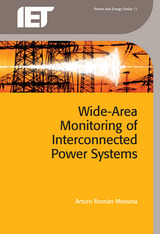
Wide Area Monitoring of Interconnected Power Systems
Arturo Román Messina
The Institution of Engineering and Technology, 2015
This book provides a compact yet comprehensive treatment of advanced data-driven signal processing techniques for the analysis and characterization of both ambient power system data and transient oscillations resulting from major disturbances. Inspired by recent developments in multi-sensor data fusion, multi-temporal data assimilation techniques for power system monitoring are proposed and tested in the context of modern wide-area monitoring system architectures. Recent advances in understanding and modeling nonlinear, time-varying power system processes are reviewed and factors affecting the performance these techniques are discussed.
[more]
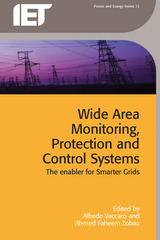
Wide Area Monitoring, Protection and Control Systems
The enabler for smarter grids
Alfredo Vaccaro
The Institution of Engineering and Technology, 2016
Wide area monitoring, protection and control systems (WAMPACs) have been recognized as the most promising enabling technologies to meet challenges of modern electric power transmission systems, where reliability, economics, environmental and other social objectives must be balanced to optimize the grid assets and satisfy growing electrical demand. To this aim WAMPAC requires precise phasor and frequency information, which are acquired by deploying multiple time synchronized sensors, known as Phasor Measurement Units (PMUs), providing precise synchronized information about voltage and current phasors, frequency and rate-of-change-of-frequency.
[more]

Wide Bandgap Semiconductors and their Applications in Power Electronics
Philip A. Mawby
The Institution of Engineering and Technology, 2024
This book covers the progress made in the area of wide bandgap semiconductor (WBG) technologies, in particular SiC, with a strong emphasis on their applications torapidly progressing areas such as automotive, aerospace and the whole electrical energy sector. The book is unique in its blend of device functionality and capabilities, technology road maps, as well as addressing the important aspects of real-life applications of these emerging devices. The benefits offered by wide bandgap material devices is enormous, and in the era of more electrification of transport and reformation of the whole energy supply chain this is set to be one of the key defining technologies over the next few decades that will support the whole eco-structure of society in the 21st century, much as silicon has done over the last half of the 20th century.
[more]
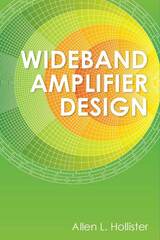
Wideband Amplifier Design
Allen L. Hollister
The Institution of Engineering and Technology, 2007
In this book, the theory needed to understand wideband amplifier design using the simplest models possible will be developed. This theory will be used to develop algebraic equations that describe particular circuits used in high frequency design so that the reader develops a 'gut level' understanding of the process and circuit. SPICE and Genesys simulations will be performed to show the accuracy of the algebraic models. By looking at differences between the algebraic equations and the simulations, new algebraic models will be developed that include parameters originally left out of the model. By including these new elements, the algebraic equations provide surprising accuracy while maintaining simplicity and understanding of the circuit.
[more]
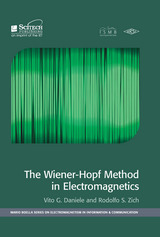
The Wiener-Hopf Method in Electromagnetics
Vito G. Daniele
The Institution of Engineering and Technology, 2014
This advanced research monograph is devoted to the Wiener-Hopf technique, a function-theoretic method that has found applications in a variety of fields, most notably in analytical studies of diffraction and scattering of waves. It provides a comprehensive treatment of the subject and covers the latest developments, illustrates the wide range of possible applications for this method, and includes an extensive outline of the most powerful analytical tool for the solution of diffraction problems.
[more]
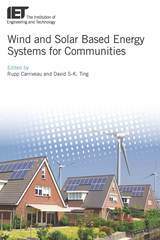
Wind and Solar Based Energy Systems for Communities
Rupp Carriveau
The Institution of Engineering and Technology, 2018
A sustainable community energy system is an approach to supplying a local community - ranging from a few homes or farms to entire cities - with its energy requirements from renewable energy or high-efficiency co-generation energy sources. Such systems are frequently based on wind power, solar power, biomass, either singly or in combination. Community energy projects have been growing in numbers in several key regions.
[more]
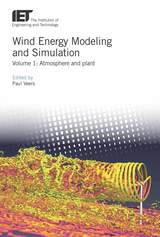
Wind Energy Modeling and Simulation
Atmosphere and plant, Volume 1
Paul Veers
The Institution of Engineering and Technology, 2020
In order to optimise the yield of wind power from existing and future wind plants, the entire breadth of the system of a plant, from the wind field to the turbine components, needs to be modelled in the design process. The modelling and simulation approaches used in each subsystem as well as the system-wide solution methods to optimize across subsystem boundaries are described in this reference. Chapters are written by technical experts in each field, describing the current state of the art in modelling and simulation for wind plant design. This comprehensive, two-volume research reference will provide long-lasting insight into the methods that will need to be developed for the technology to advance into its next generation.
[more]
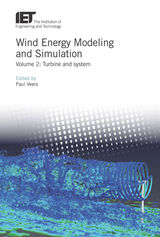
Wind Energy Modeling and Simulation
Turbine and system, Volume 2
Paul Veers
The Institution of Engineering and Technology, 2020
In order to optimise the yield of wind power from existing and future wind plants, the entire breadth of the system of a plant, from the wind field to the turbine components, needs to be modelled in the design process. The modelling and simulation approaches used in each subsystem as well as the system-wide solution methods to optimize across subsystem boundaries are described in this reference. Chapters are written by technical experts in each field, describing the current state of the art in modelling and simulation for wind plant design. This comprehensive, two-volume research reference will provide long-lasting insight into the methods that will need to be developed for the technology to advance into its next generation.
[more]
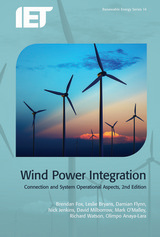
Wind Power Integration
Connection and system operational aspects
Brendan Fox
The Institution of Engineering and Technology, 2014
The rapid growth of wind generation has many implications for power system planning, operation and control. Network development, voltage rise, protection, monitoring and control are connection problems common to all wind power generation.
[more]
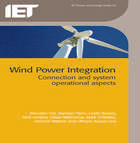
Wind Power Integration
Connection and system operational aspects
Brendan Fox
The Institution of Engineering and Technology, 2007
The rapid growth of wind generation has many implications for power system planning, operation and control. This would have been a considerable challenge for the old nationalised power companies; it has become an even greater challenge in today's liberalised electricity markets.
[more]

Wind Power Modelling
Power plants and grid integration, Volume 3
Paul Veers
The Institution of Engineering and Technology, 2019
Wind Power Modelling: Power plants and grid integration is the third book in a comprehensive three-volume set on wind farm power modelling; the key to efficient wind plant design and wind power growth. The set covers every aspect - from wind flow over turbine component design to grid integration. With chapters from eminent international experts, the set is written for researchers in academia and industry involved with all facets of wind power modelling. Covering generation, storage technologies and grid models, this volume will be of particular interest to practitioners in the utilities sector.
[more]

Wind Turbine System Design
Electrical systems, grid integration, control and monitoring, Volume 2
Jan Wenske
The Institution of Engineering and Technology, 2024
Wind energy is a pillar of the strategy for mitigating greenhouse gas emissions and staving off catastrophic climate change, but the market is under tremendous pressure to reduce costs. This results in the need for optimising any new wind turbine to maximise the return on investment and keep the technology profitable and the sector thriving. Optimisation involves selecting the best component out of many, and then optimising the system as a whole.
[more]

Wind Turbine System Design
Nacelles, drivetrains and verification, Volume 1
Jan Wenske
The Institution of Engineering and Technology, 2022
Wind energy is a pillar of the strategy to mitigate greenhouse gas emissions and stave off catastrophic climate change, but the market is under tremendous pressure to reduce costs. This results in the need for optimising any new wind turbine to maximise the return on investment and keep the technology profitable and the sector thriving. Optimisation involves selecting the best component out of many, and then optimising the system as a whole. Key components are the nacelles and drive trains, and the verification of their work as a system.
[more]
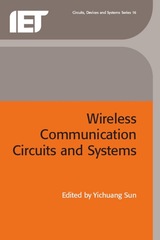
Wireless Communications Circuits and Systems
Yichuang Sun
The Institution of Engineering and Technology, 2004
This book presents a state of the art review of integrated circuits, systems and transceivers for wireless and mobile communications. Contributions from world-class researchers focus upon the most recent developments in key RF, IF and baseband components and subsystems and transceiver architecture in CMOS technology. Adopting a top-down approach from wireless communications systems, mobile terminals and transceivers, to constituent components, this book covers the whole range of baseband, IF and RF issues in a systematic way. Circuit and system techniques for design and implementation of reconfigurable low voltage and low power single-chip CMOS transceivers for both mobile cellular and wireless LAN applications are included.
[more]
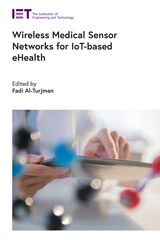
Wireless Medical Sensor Networks for IoT-based eHealth
Fadi Al-Turjman
The Institution of Engineering and Technology, 2020
Internet of Things (IoT) enabled technology is evolving healthcare from conventional hub-based systems to more personalized eHealth systems, enabling faster and safer preventive care, lower overall cost, improved patient-centric practice and enhanced sustainability. Efficient IoT-enabled eHealth systems can be realized by providing highly customized access to rich medical information and efficient clinical decisions to each individual with unobtrusive monitoring. Wireless medical sensor networks (WMSNs) are at the heart of this concept, and their development is a key issue if such a concept is to achieve its potential.
[more]
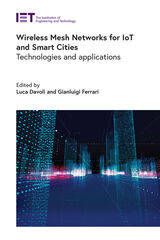
Wireless Mesh Networks for IoT and Smart Cities
Technologies and applications
Luca Davoli
The Institution of Engineering and Technology, 2022
Wireless mesh networks (WMNs) are wireless communication networks organized in a mesh topology with radio capabilities. These networks can self-form and self-heal and are not restricted to a specific technology or communication protocol. They provide flexible yet reliable connectivity that cellular networks cannot deliver. Thanks to technological advances in machine learning, software defined radio, UAV/UGV, big data, IoT and smart cities, wireless mesh networks have found much renewed interest for communication network applications.
[more]

Wireless Power Transfer Technologies
Theory and technologies
Naoki Shinohara
The Institution of Engineering and Technology, 2024
Wireless Power Transfer (WPT) serves to transfer power from a grid or storage unit to a device without the need for cable connections. This can be performed by induction, as well as by using radio or microwaves.
[more]
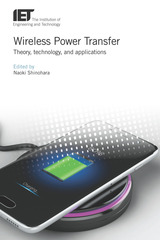
Wireless Power Transfer
Theory, technology, and applications
Naoki Shinohara
The Institution of Engineering and Technology, 2018
Wireless Power Transfer (WPT) enables power to be transferred from a grid or storage unit to a device without the need for cable connections. This can be performed by inductive coupling of magnetic fields as well as by direct radiative transfer via beams of electromagnetic waves, commonly radiowaves, microwaves or lasers. Inductive coupling is the most widely used wireless technology with applications including charging handheld devices, RFID tags, chargers for implantable medical devices, and proposed systems for charging electric vehicles. Applications of radiative power transfer include solar power satellites and wireless powered drone aircraft.
[more]
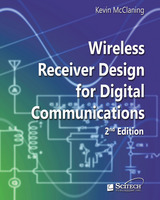
Wireless Receiver Design for Digital Communications
Kevin McClaning
The Institution of Engineering and Technology, 2012
Practical lessons and approaches in radio receiver design for wireless communication systems are the hallmarks of Wireless Receiver Design for Digital Communications, 2nd Edition. Decades of experience 'at the bench' are collected within and the book acts as a virtual replacement for a mentor who teaches basic concepts from a practical perspective and has the war stories that help their 'apprentice' avoid the mistakes of the past.
[more]

Wireless
The Crucial Decade: History of the British wireless industry 1924-34
Gordon Bussey
The Institution of Engineering and Technology, 1990
The crucial decade for the development of the domestic wireless was 1924-34. At the beginning of the period most receivers in Britain were crystal sets, but by the end nearly all sets were on the mains, using valves and mostly with superhet circuits-broadly the same as those in use today.
[more]

Wood Pole Overhead Lines
Brian Wareing
The Institution of Engineering and Technology, 2005
Wood Pole Overhead Lines provides comprehensive coverage of medium voltage wood pole overhead lines. It includes guidance on the planning and mechanical design of overhead lines, as well as details of statutory requirements and the latest UK and European standards affecting UK design of wood pole networks, Sag/tension calculations are explained, and details of the latest work on safe design tension limits to avoid conductor fatigue from vibration are included. The basic characteristics of bare and covered conductors are discussed as well as upgrading possibilities, condition assessment and the latest work on 'health indices' for overhead lines. Other topics include wood pole decay and mitigation methods, maintenance schedules, live line working and basic lightning protection.
[more]

World Telecommunications Economics
Jeffery J. Wheatley
The Institution of Engineering and Technology, 1999
This book bridges the worlds of the economist, the engineer, the regulator and the manager. It outlines the technology of the subject in sufficient detail to provide an understanding of the industry's economics, and presents a comprehensive picture of the markets into which its products and services are sold.
[more]
READERS
Browse our collection.
PUBLISHERS
See BiblioVault's publisher services.
STUDENT SERVICES
Files for college accessibility offices.
UChicago Accessibility Resources
home | accessibility | search | about | contact us
BiblioVault ® 2001 - 2024
The University of Chicago Press









